
Next year, Velocity Frequent Flyer will make significant changes to the way members earn status. For many, earning status will become harder and more expensive.

For the first time, to attain status, you’ll also need to earn at least 50% of your status credits from Virgin Australia flights that you personally fly.
I do think there’s a valid argument to be made that Virgin Australia status is currently too easy to earn. Between family pooling, Virgin’s discounted Business Class fares, generous earn rates on partner airlines, and the ability to earn status credits for shopping at Coles, many people have earned Gold or even Platinum status without actually spending that much on Virgin Australia flights.
Throw in Velocity’s regular double status credit promotions – and even a triple status credits offer earlier this year – and it’s almost become a bit of a joke.
But are the program changes coming in 2025 an overcorrection? Will it still be worth chasing status with Virgin Australia Velocity?
Contents
Velocity status is currently easier to earn… as it should be
Here’s the thing. For many frequent flyers, Virgin Australia Velocity status is not as attractive as Qantas status. That’s because Virgin Australia is not a member of an alliance.
I like Virgin Australia’s service ethos and friendly staff. And the benefits you get as a Velocity Gold or Platinum member flying Virgin domestically are great. Overall, I think Virgin does a good job of looking after its top-tier members.

But compared to Qantas, Virgin lacks a solid international network and has far fewer airport lounges. I do also find that the catering in Virgin Australia Lounges, especially the alcohol selection, is just not up to the same standard as the Qantas lounges in major airports. (That said, I can thank Virgin for helping me to reduce my wine consumption, since the wine in its lounges tastes so bad that I no longer drink it!)

Much more importantly, the recognition for Velocity members when flying Virgin’s partner airlines is utterly inconsistent. I look at this stuff for a living, and I still have to look up what benefits I’m going to get as a Platinum member before flying with a Velocity partner. They’re different with every partner airline, and even core benefits like lounge access often aren’t included.
Virgin Australia also lacks a single international lounge of its own, and it doesn’t offer third-party lounge access either when you fly Virgin overseas. Not that I often do, since the airline now only flies to a small handful of holiday destinations outside of Australia.
By comparison, Qantas flies to every inhabited continent and offers strong, consistent frequent flyer benefits with its Oneworld alliance partners.
Frequent domestic travellers may be better off
With the upcoming changes, Velocity status will become harder to earn. It will potentially require you to spend much more money on Virgin Australia marketed flights than before.
That’s fine if you do a lot of Virgin Australia domestic flying on more expensive tickets. In fact, Virgin’s most loyal and frequent domestic flyers will likely benefit through the introduction of Platinum Plus. The new Forever Gold lifetime tier is also worth aiming for.
Those who still manage to maintain Velocity status might even benefit from Virgin “thinning out” its ranks of elite flyers. This could lead to less crowded lounges, fewer people in the priority queues and better overall recognition, as you’re sharing your status benefits with fewer other flyers.

So, if you’re a frequent domestic traveller who likes flying Virgin Australia, it’s probably worth retaining Velocity status beyond 2025.
International flyers might want to look for alternatives
If you travel overseas frequently, as I do, the value proposition of Velocity status beyond 2025 starts to fall apart.
Many Velocity members know that they get fewer overall benefits with Virgin Australia status, especially outside of Australia, than they do with Qantas status. But they are prepared to stick with Velocity (or actively use both Virgin and Qantas) because Velocity status is easier to earn. It’s a conscious trade-off for many frequent flyers.
But when Velocity status becomes just as hard to earn as Qantas status – if not harder – that shifts the needle. Suddenly, Qantas status looks more attractive. And that’s before you consider that Velocity is also reducing the status credits you’ll earn when flying on its international partner network.
Separately, Virgin also wants to drop some of its existing partnerships, including with Etihad and South African Airways, if the Australian government approves Qatar Airways’ plan to buy a stake in Virgin Australia.

With these program changes, I think Velocity is acting like it’s in the same league as Qantas Frequent Flyer. That’s a brave position to take.
When it comes to earning and burning points, Velocity and Qantas are fairly similar. But, in my opinion, they are not equal in terms of status benefits.
If Virgin Australia backed its position up with much stronger benefits on international partners, or by joining Star Alliance, that would move the needle a lot. I can’t see this happening any time soon, although I’d be happy for VA to surprise me!
Virgin Australia codeshare flights
Velocity would point out that status credits from codeshare flights marketed by Virgin Australia also count towards the “50% VA marketed flights” requirement. The VA flight number is available to book on codeshares operated by Singapore Airlines, Qatar Airways, United, ANA and Link Airways.
But booking a codeshare flight through Virgin Australia isn’t always a seamless experience. For example, you can’t even select a seat when booking an ANA flight as a VA codeshare. Virgin should probably look at addressing things like this before pushing its frequent flyers to book these flights (and, by virtue, punishing those who don’t).
Booking United or Qatar Airways flights as VA codeshares generally works OK. But you can’t book Premium Economy flights on United, many Singapore Airlines flights are unavailable or much more expensive, and it’s difficult to book multi-city itineraries as Virgin Australia codeshares. Frankly, as a customer, I can get a better experience – and often a better price – by booking direct with the partner airline.

Going forward, when I fly with Singapore Airlines, United or ANA, I’ll probably just continue booking direct… and crediting these flights to a Star Alliance loyalty program instead of Velocity.
My personal plan for Velocity status beyond 2025
I was a Velocity Gold member for many years and have held Platinum status for the last couple of years. I also currently have Qantas Platinum, Star Alliance Gold and SkyTeam Elite Plus status.
There are things about Velocity Platinum status that I do certainly value. For example, access to the Etihad First Class Lounge in Abu Dhabi is a great benefit. I also like being able to bring up to three non-flying guests into Virgin Australia domestic lounges. I like being able to fly ahead on Economy Choice fares. And I like the complimentary Platinum upgrades.
But to retain my Platinum status, earning 1 status credit for every $12 spent on Virgin Australia flights, I would need to spend at least $9,600 per year with the airline.
Do I like my Platinum benefits enough that I’d be prepared to spend that much? No, I don’t.
My decision to retain Velocity Platinum this year was already marginal. I almost didn’t bother. But I decided to go for it when I realised I could earn 660 of the 800 required status credits needed to renew Platinum by booking a single round-trip Business Class ticket from Canberra to Adelaide via Melbourne, during May’s triple status credits offer, for around $900. I could then just fly a few more eligible sectors, plus a couple of Etihad Economy flights, to make up the remaining 140 status credits.

When that’s the equation, I might as well go for it. But the new requirements are too high for me to bother. It’s just not worth it for me.
Going forward, I’ll probably still fly Virgin Australia domestically every now and again, but only when it’s more convenient or cheaper than alternatives. I’ll no longer go out of my way to preference the airline above Qantas if the timing and price are similar – as they often are on the domestic routes I fly most.
Perhaps I’m not really the kind of customer that Virgin wants, anyway. I don’t think they’ll miss me too much, and if the new status system encourages other frequent flyers to spend more than before, Virgin will probably be ahead overall.
But ultimately, Qantas will likely get more of my business as a result of Velocity’s program changes. Provided, that is, that Qantas doesn’t use this as “permission” to devalue its own program in the future.
Those are just my personal thoughts, based on my own travel patterns – which are more international than domestic. You may decide on a different strategy. I’m not saying that you should ditch Virgin Australia if it continues to work for you!
Options for Virgin Australia flyers
So, if you’re currently a loyal Virgin Australia flyer, what options do you have going forward?
Here are a few scenarios you could consider…
Stick with Virgin but spend more to maintain your status
You may decide that Velocity Frequent Flyer still meets your needs. You may end up spending more to earn the same amount of status credits as you currently do. But if you’re OK with that, there’s no need to switch programs or airlines.
Just to give you an idea, these are the amounts you’d need to spend under the post-2025 system on Virgin Australia Choice, Flex or Business fares to earn or maintain status:
| Status tier | Annual spend required to earn | Annual spend required to maintain |
|---|---|---|
| Silver | $3,000 | $2,400 |
| Gold | $6,000 | $4,800 |
| Platinum | $12,000 | $9,600 |
| Platinum Plus | $24,000 | $24,000 |
Switch to Qantas
If Velocity status is no longer worth it for you, switching to Qantas Frequent Flyer is the obvious alternative. But the grass isn’t necessarily greener on the other side. Qantas status won’t necessarily be easier to earn, although the benefits are arguably better when flying overseas.

Use an overseas frequent flyer program to get benefits on Virgin Australia
A left-field alternative is to gain status with an international airline that partners with Virgin Australia. That way, you can continue enjoying selected benefits on Virgin Australia, while earning points and status outside of the Velocity Frequent Flyer ecosystem.
One clever option could be to earn status with Qatar Airways Privilege Club. This provides benefits not only with Virgin Australia, but also when you fly with Qantas due to Qatar Airways’ membership in the Oneworld alliance. That said, Qatar Airways status is not necessarily going to be easier to earn than Velocity status.

Another option could be to gain status with a Star Alliance airline that partners with Virgin Australia, such as Singapore Airlines or United. That way, you get benefits not just on Virgin Australia, but across all of Star Alliance.
The HSBC Star Alliance credit card would be perfect for this. That card has an annual fee of just $450 (which is waived in the first year), and gives you an easy shortcut to Star Alliance Gold status with your choice of seven Star Alliance airlines – including Singapore Airlines and United.
Get Star Alliance Gold status without flying…
- Card Name
- HSBC Star Alliance Credit Card
- Earn
- 1
- Signup Bonus
-
Fast Track to Star Alliance Gold Status
- Annual Fee
- $0 in the first year, $499 p.a. thereafter
- Read more
- View Offer
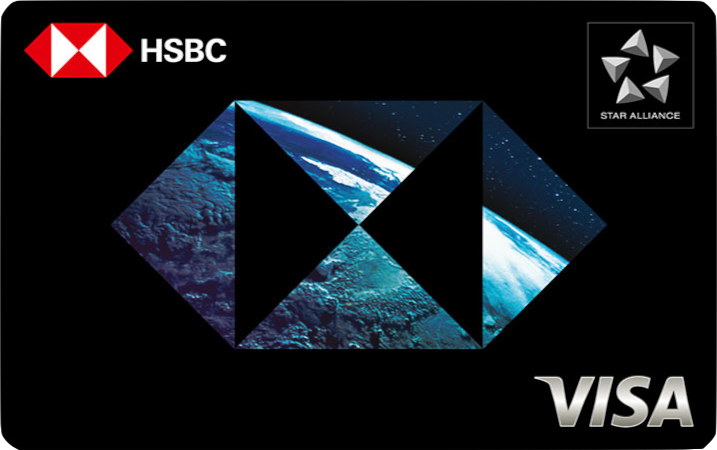
on everyday purchases
Forget status and buy a lounge membership
Rather than spending thousands to earn Velocity status, if most of your flying is domestic, you could instead purchase a Virgin Australia Lounge membership. You can even get a discount if you’re a Virgin Australia Business Flyer member. This doesn’t come with the full suite of benefits you’d get with Velocity status, like priority lanes or partner airline benefits, but you will at least get into the lounge.
Alternatively, you can get lounge passes with various Australian credit cards. You can even get unlimited Virgin Australia Lounge access – alongside many other travel benefits – with the American Express Platinum card.
The American Express Platinum Card
- Card Name
- American Express Platinum Card
- Earn
- 2.25
- Signup Bonus
-
150,000 bonus Membership Rewards points¹
Apply by 6th May 2025
- Annual Fee
- $1,450 p.a.
- Read more
- View Offer

on everyday purchases
Since November 2024, you can also use the Virgin Australia Lounge ahead of your flight if you have an Amex Velocity Platinum credit card. This card costs just $440 per year and also comes with a complimentary annual return domestic flight!
Enjoy Virgin Australia Lounge access and a complimentary annual return domestic flight…
- Card Name
- American Express Velocity Platinum
- Earn
- 1.25
- Signup Bonus
-
100,000 bonus Velocity Points*
Apply by 30th Apr 2025
- Annual Fee
- $440 p.a.
- Read more
- View Offer
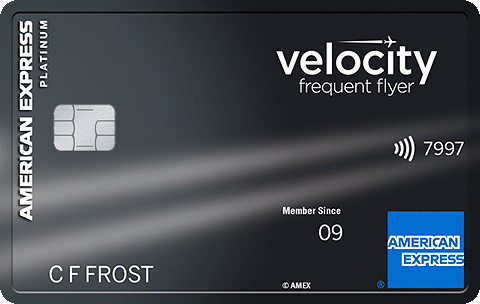
on everyday purchases
Join the discussion on AFF
What’s your Velocity status strategy from next year? You can share your thoughts, ask questions and read what others have to say on the Australian Frequent Flyer forum!


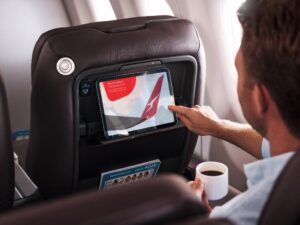
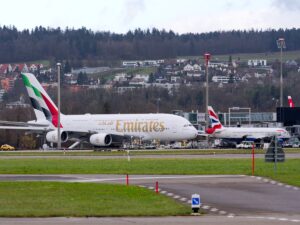


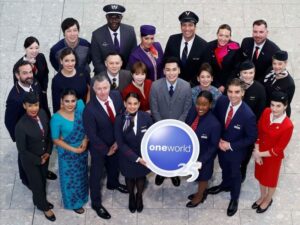





















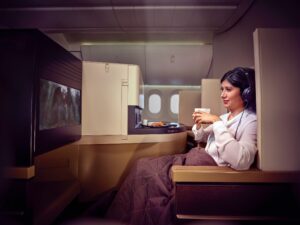













































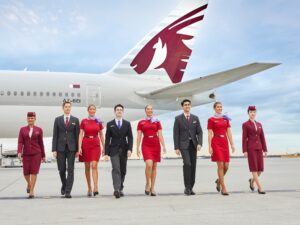





Community Comments
Loading new replies...
Join the full discussion at the Australian Frequent Flyer →